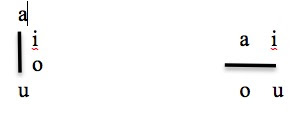Summary:
Jeremiah Rich (d. ~1660) was most likely from a good family because he dedicated his 1659 Penns Dexterity to the “Right Honourable Lady Mary Rich,” the Countess of Warwick and a likely relative with whom he probably lived as a tutor. Rich learned shorthand from his uncle, William Cartwright, became a well-known practitioner, and is one of the earliest known reporters of trails. Jeremiah Rich published his shorthand system in the following books:
• Semography in 1642.
• Charactery in 1646.
• Semigraphy or Arts Rarity in 1654.
• The World’s Rarity before 1660.
• The Penns [Pen's] Dexterity in 1659.
Unfortunately, Jeremiah Rich was not the inventor of his shorthand system; it was developed by his uncle, William Cartwright. While Rich published Semography, the author of the system is clearly William Cartwright. The later portion of Semography’s subtitle reads:
"…Invented and composed for the benefit of others by the Author hereof William Cartwright, and is now set forth and published by his nephew, Ieremiah Rich, immediate next to the Author deceased…"While Jeremiah Rich did not author the system, he did popularize it. Cornelius Walford, a President of the Shorthand Society of London, in The Phonetic Journal (Feb. 21, 1885) stated:
“[Jeremiah] Rich did a great deal to popularize stenography in the United Kingdom during the second half of the 17th century is absolutely clear; and I have reason to suppose from various manuscripts and shorthand notes in books that a great many of the learned professors at the Universities became familiar with and practiced his system.”
Pen's Dexterity Alphabet:
The alphabet is based on the 1627 alphabet of Edmond Willis
Pen's Dexterity Vowel Expression:
Initial vowels were expressed by alphabet sign. Medial vowels were expressed by “Vowel Mode” using the following four positions based on spelling or best represented sound. Final vowels were expressed by dots in the Vowel Mode position. The vowel E was omitted it for ef-, el-, em-, en-, er-. es-, ex-, be-, de-, ge-, pe-, and te-. When written medially, E was represented by a small joined circle. Final E was written as a dot in the I vowel position.
Resources:
1. Dictionary of National Biography. 2nd Edition (1909), Vol. 16, page 1000-1001
2. A History of Shorthand by Isaac Pitman (1891), page 21 to 26
3. “A Critical and Historical Account of the Art of Shorthand” The National Stenographer
(Dec 1882)
4. Story of British Shorthand by Edward Butler. 1951. Pages 38 to 40.
5. Pen’s Dexterity (1690)




No comments:
Post a Comment